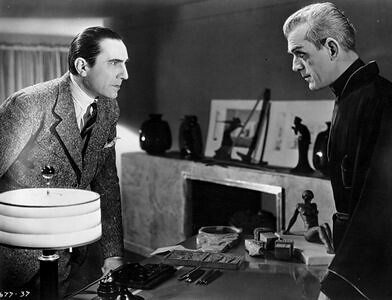A love letter to light, shadow, and the psychological horror genre as a whole, "The Innocents" is proof positive of Jack Clayton's passion for film. Yet outside of the stunning aesthetics that made this adapted screenplay one of Scorsese's 11 scariest horror movies, it is also a testament to the acting. But Deborah Kerr always lacks the ability to suck, but it is Martin Stephens's role as Miles that makes this movie.
Miss Giddens (Kerr) gets a job as a governess for a rich man's orphaned niece and nephew who are kept at his country estate. Going into the position without any information of the mansion's history or why the children are so impossible to keep in boarding school, the governess, finds herself hearing voices and feeling strange presences at night, leading her to believe the children are being used by the spirits of the ex-dead valet and governess. Once she separates the children in the attempts to break the hysteria between them, Flora (Pamela Franklin) being taken away by the housekeeper (Megs Jenkins), Miss Giddens goes one on one with the young Miles and things get astonishingly scary, courtesy of Stephens's shocking acting ability.
Both Franklin and Stephens truly own this movie being only the ages 11 and 12 respectively, being mere objects to the lover spirits of Peter Quint and Miss Jessel. They look at each other as if they were an old married couple one minute and like young star-crossed lust-fueled lovers the next. This is more unsettling than all the beautiful effects! But this isn't Martin Stephen's first rodeo as a "creepy kid" in his role as a dangerous half-alien genius in the "Village of the Damned" (1960) and it wouldn't be Franklin's last as the sexually repressed psychic in "The Legend of Hell House" (1973). Both of them are skilled in what little of the script they were given, never knowing they were shooting a horror film.
Although technically adapted from William Archibald's 1950 stage adaptation than from Henry James's "The Turn of the Screw," this film is every bit of atmospheric . "The subtlety with which he [Clayton] and his team established the atmosphere of the two worlds - the everyday and the spirit world - was so evocative of decadence, in the most delicate manner [...] One instance is the way the edges of the screen were slightly out of focus, as though seen through a glass, perhaps." (Deborah Kerr. Eric Braun. 1978.) But perhaps the ambience is something coming from the governess's mind and not an environmental haunting. Regardless, the famous ending of Kerr kissing Miles on the lips is perhaps the most haunting out of any moment in the whole movie.











